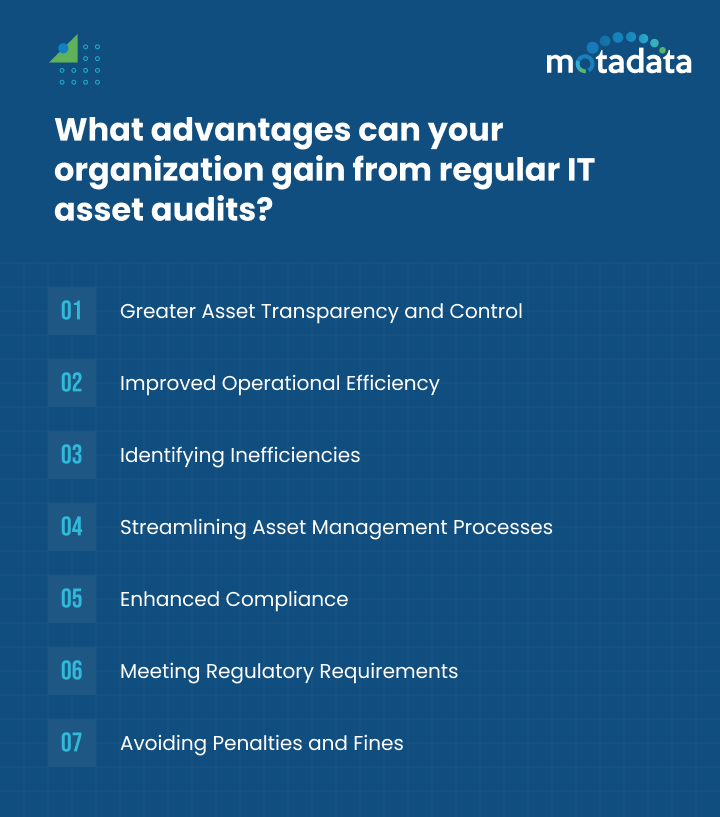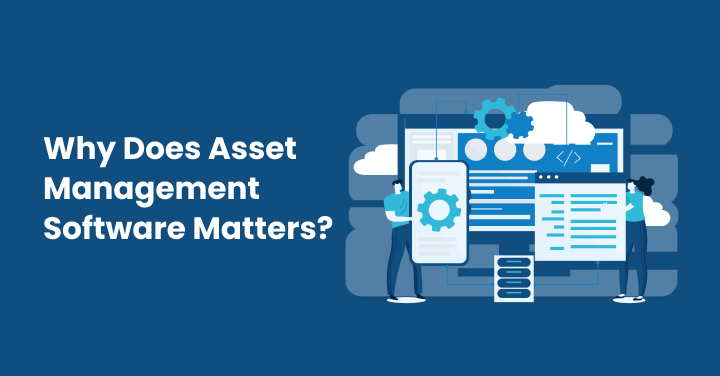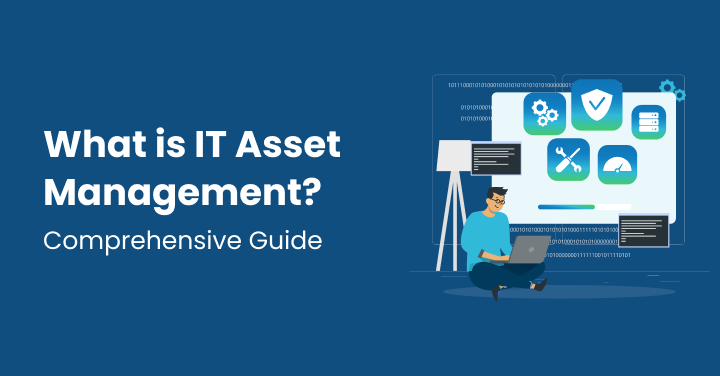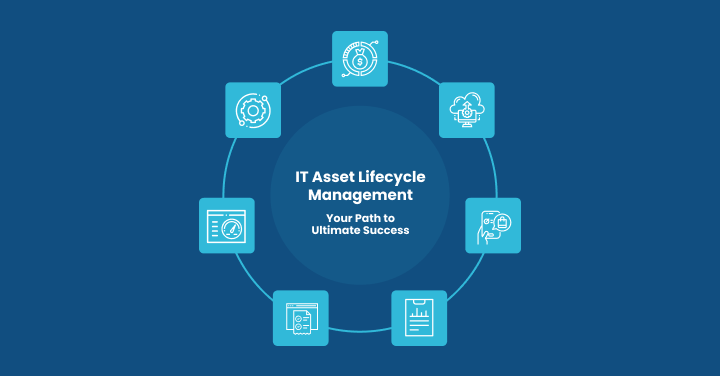Introduction
When you hear of audit, people usually presume that audit processes are just for making money.
They do not partake a role in the IT Asset Management. Questions like, Is IT Asset Audit necessary?
Does conducting asset audit process literally offer any advantages? arise in everyone’s minds.
In today’s fast-paced digital transformation world, regular analysis of the asset records of the IT assets are the spinal cord of any organization, driving operations, supporting productivity, and safeguarding valuable data.
However, managing these assets effectively is not just about taking care of them from procurement to deployment or just compliance management.
Regular IT audit reports are essential data sources to ensure that your assets are being utilized efficiently, remain compliant, and continue to deliver value to your business avoiding the financial risks.
In this blog, we’ll explore the key benefits of conducting the routine IT asset audits and how an effective audit process contributes to the overall achievement of your organization.
What Advantages Can your Organization gain from regular IT Asset Audits?
Regular IT asset audits offer significant advantages for your organization.
By ensuring accurate inventory management, these audits help in identifying vulnerabilities, improving compliance, and optimizing resource allocation.
They also play a crucial role in enhancing cybersecurity, reducing risks, and enabling better decision-making to drive overall operational efficiency and security
1. Greater Asset Transparency and Control
Knowing the location and condition of your assets is crucial for effective management.
Regular audits give you a clear picture of your IT infrastructure’s current state, enabling you to forecast future expenses more reliably (manually or via fp&a software).
By regularly updating your asset inventory, you can identify underutilized, misplaced, or old assets, enabling better resource allocation.
This process helps to optimize the asset usage, reduce unnecessary expenditures, and prevent waste.
Additionally, increased transparency allows for quicker responses to changes in your IT environment, ensuring your infrastructure remains agile and efficient.
In essence, routine audits empower your organization to manage and track assets more effectively, contributing to cost savings and enhanced functional efficiency.
2. Improved Operational Efficiency
Achieving high operational efficiency is essential for organizations aiming to maximize productivity and better inventory management while minimizing costs.
Routine IT asset audits are a powerful tool in this regard, as the accurate records help to identify inefficiencies and streamline asset management business processes, leading to smoother and more effective operations right from the first step to the final step.
3. Identifying Inefficiencies
Regular asset auditing allows organizations to reveal inefficiencies within their IT infrastructure.
For example, audits might disclose outdated hardware that slows down operations, underutilized software, or redundant systems that create unnecessary complexity and enhance better asset utilization.
With these issues, a competent IT asset management audit checklist provides a clear roadmap for addressing the bottlenecks, optimizing resource allocation, and eliminating waste.
This process ensures that your IT environment operates at peak efficiency, supporting the overall productivity of your organization.
Also, proper lifecycle management and accurate data is maintained.
4. Streamlining Asset Management Processes
Beyond identifying inefficiencies, routine audits also streamline hardware asset management and software asset management processes.
They provide accurate IT assets data, enabling more efficient asset tracking, maintenance, and deployment.
By simplifying the management of assets, audits reduce the administrative burden on IT teams, freeing them to focus on more strategic initiatives.
This not only enhances operational efficiency but also contributes to a more agile and responsive IT infrastructure, better equipped to meet the evolving needs of the organization.
5. Enhanced Compliance
Many a times compliance issues result into costly penalties, legal complications, and damage to an organization’s reputation.
Hence, ITAM Compliance is a vital aspect of managing IT assets, especially in industries with strict regulatory requirements.
Routine IT asset audits play a crucial role in ensuring that your organization consistently meets these regulatory standards and avoids the costly consequences of non-compliance.
Thus, increasing the confidence and goodwill of the organizations. This reduces the compliance risks.
6. Meeting Regulatory Requirements
Regular audits help organizations stay aligned with industry-specific regulations by ensuring that all IT assets are properly documented, licensed, and updated.
Whether it’s software licensing, data protection standards, or security protocols, audits verify that your IT environment adheres to the latest ITAM compliance requirements.
This proactive approach minimizes the risk of regulatory breaches, which could otherwise lead to significant operational disruptions.
7. Avoiding Penalties and Fines
Failure to comply with the regulatory business requirements can result in severe penalties, including hefty fines and legal actions.
By conducting regular IT asset audits, your organization can identify and rectify any compliance gaps or potential risks before they escalate into larger issues.
This not only protects your business from financial penalties but also safeguards your reputation by demonstrating a commitment to maintaining high standards of compliance and governance.
Financial Benefits
Maximum ROI on minimum investment is the key goal of every business.
And, to achieve that regular IT asset audit plays a major role. Routine IT asset audits provide significant financial benefits by ensuring accurate asset valuation and depreciation, which in turn supports better financial planning and budgeting.
1. Accurate Asset Valuation and Depreciation
One of the key financial advantages of regular audits is the ability to maintain precise records of asset valuation and depreciation.
By keeping a detailed inventory of your IT assets, including their purchase dates, condition, and current market value, you can more accurately calculate depreciation over time.
This ensures that your financial statements reflect the true value of your assets, preventing cost overruns or undervaluation.
Accurate depreciation records also provide tax benefits, as they allow you to claim the correct deductions, maximizing your potential savings.
Tax deductions for IT assets include Section 179, bonus depreciation, software costs, repairs, and cloud services. There is an assortment of free tax tools available that can help or you can consult a tax professional.
2. Better Financial Planning and Budgeting
Accurate asset data is essential for effective financial planning and budgeting.
Regular audits give you a clear picture of your IT infrastructure’s current state, enabling you to forecast future expenses more reliably.
For example, once the assets are added via asset discovery, knowing when they should be replaced or upgraded helps you to plan for capital expenditures.
This aids in avoiding unexpected costs that could disrupt your budget.
Additionally, identifying underutilized or obsolete assets allows you to reallocate resources more efficiently, optimizing your IT budget.
This proactive approach to financial management not only helps to control costs but also supports long-term financial stability and growth for your organization.
3. Risk Mitigation
No one likes to take risk. But success demands taking some level of risk at least.
Hence, to address this, effective risk mitigation is a critical component of IT asset management.
Routine audits play a central part to safeguard your organization by identifying vulnerabilities and ensuring asset security and reliability.
4. Identifying and Addressing Vulnerabilities
Routine IT asset audits are essential for uncovering potential susceptibilities within your IT infrastructure.
These audits help you to identify outdated software, unsupported hardware, sensitive data, and other weak points that could be exploited by cyber threats.
By detecting these issues early, you can take proactive measures to address them, such as applying necessary patches, updating systems, or decommissioning obsolete assets.
This preventive approach minimizes the risk of security breaches, data loss, and other incidents that could severely impact your organization.
5. Ensuring Asset Security and Reliability
Beyond addressing vulnerabilities, regular audits ensure that your IT assets remain secure and reliable.
By maintaining an up-to-date inventory and regularly assessing the condition of your assets, you can ensure that important systems are functioning optimally and that security measures are consistently enforced.
This protects your organization from external threats.
Also, it ensures that your IT infrastructure operates smoothly, reducing the likelihood of unexpected downtime or failures.
In this way, routine audits contribute to a more resilient and secure IT environment, ultimately protecting your organization’s operations, reputation, and bottom line.
Conclusion
In summary, regular IT asset audits offer a multitude of benefits that are essential for maintaining an efficient, secure, and financially sound organization.
By enhancing asset visibility and control, these audits allow you to manage your resources more effectively, ensuring that every asset is accounted for and utilized to its fullest potential.
Improved operational efficiency is another key advantage, as audits help identify inefficiencies and streamline processes, leading to smoother day-to-day operations.
Furthermore, routine audits play a critical role in ensuring regulatory compliance with industry standards, thereby helping your organization avoid costly penalties and maintain a strong reputation.
The financial benefits are equally significant, with accurate asset valuation and depreciation supporting better financial planning and budgeting.
Lastly, by identifying and addressing vulnerabilities, regular audits bolster your organization’s security posture and ensure the reliability of your IT infrastructure.
Given these substantial benefits, regular IT asset audits are not just a best practice—they are a necessity.
Implementing a routine audit schedule will empower your organization to stay ahead of potential issues, optimize resource use, and make informed decisions that drive long-term success.
Also, it increases the value of your company.
Now is the time to prioritize regular IT asset audits and integrate them into your organizational strategy, ensuring that your IT environment remains robust, compliant, and ready to meet the challenges of the future.
Recommendation
I know after going through the above points you must be wondering as to know what to do? Which tool to buy?
How to perform Asset Audit? etc. The answer to all your questions can be Motadata ServiceOps, an IT asset management software.
It not only provides the IT asset management system tool but also has features to carry out the audit process smoothly.
With features like Reports, Event notifications, Announcements, Audit Trail, Asset History, etc.
you can perform the auditing of assets and get the required data at any time.
Also, you can maintain the financial records which helps to generate the financial reports anytime.








